

Agridisk
Egypt - Alexandria
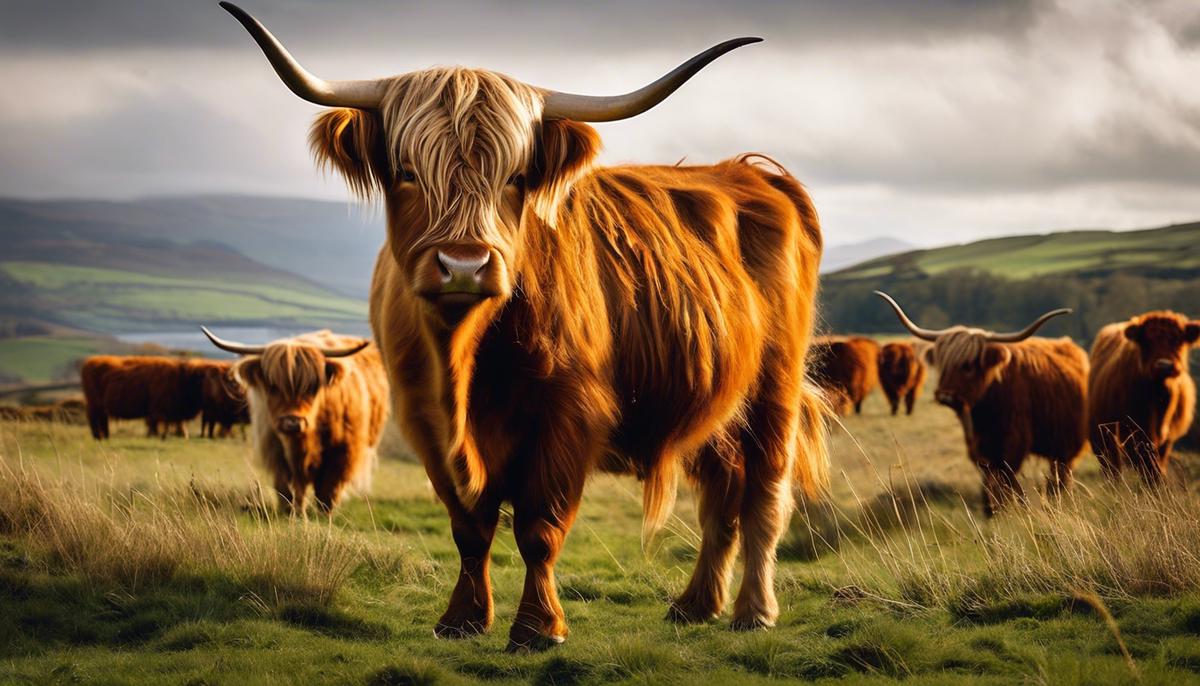
All about highland cattle & What is the purpose of a highland cow?
Description: Among the rolling hills and dramatic landscapes of Scotland, the Highland cattle breed emerged with a heritage as rugged and storied as the land from which it hails. With a lineage tracing back to the free-roaming herds of the Scottish Highlands and Western Isles, this ancient breed stands as a testament to natural selection and the enduring spirit of survival. In this exploration, we delve deep into the annals of time to unearth the ancestry and storied history of the Highland cattle. We shed light on their remarkable adaptation to some of the harshest climates on earth, the role they've played in shaping local economies through the centuries, and the indelible mark they've left on agricultural practices across the globe. As we chart the course of these majestic creatures, from their historic origins to their invaluable place in today's society, we begin to understand the intricate tapestry woven by nature, nurture, and human intervention that defines the Highland cattle. The robust and majestic Highland cattle are emblematic of the rugged Scottish landscape from which they hail. This breed, with its long horns and shaggy pelage, is not only aesthetically distinctive but also of considerable historical significance, representing centuries of selective breeding tailored to the demands of harsh climates and topographies. This article aims to elucidate the origins and historical developments that have shaped the Highland cattle into a resilient and cherished breed. Highland cattle, or "Kyloe" as they are traditionally known in their home locale, belong to the ancient bovine lineage of the British Isles, with genetic roots tracing back thousands of years. The earliest recorded presence of these cattle dates to the 6th century AD, with their lineage established among the Celtic tribes of Scotland. Their genetic forebears are presumed to have migrated to Scotland during the Neolithic period, establishing the robust line of cattle that would become one of the United Kingdom’s oldest and most enduring domesticated animal breeds. Throughout their existence, Highland cattle have been inseparable from the climes and geography of the Scottish Highlands, a region known for its severe winters, limited forage, and rugged terrain. Historically, these cattle have been revered for their ability to flourish where other breeds would languish; their thick double coats insulate against the cold, their long horns are tools for foraging through snow to reach buried vegetation, and their large, splayed hooves facilitate navigation across soggy peatlands and steep, rocky hillsides. Selective breeding practices among the early Scots served to enhance these survival traits, favoring animals which demonstrated robust health, efficient grazing habits, and calving ease. These breeding practices were more necessity than choice – a cattle breed capable of surviving Highland conditions would ensure the sustainability of the communities that depended upon them for meat, milk, and as beasts of burden. The formalization of Highland cattle breeding began with the formation of the Highland Cattle Society in Scotland in 1884. The introduction of a herd book further reinforced the integrity of the breed by setting established standards and recording pedigrees. It was during this time that the resilience of the Highland breed caught attention beyond Scottish borders, leading to the exportation of these cattle to regions such as North America and Australia, where they continued to thrive and became a genetic resource for improving hardiness in other cattle breeds. In the present day, Highland cattle are no longer just a symbol of Scottish tradition, but have also assumed the role of a conservation breed. Their capacity to graze rough vegetation aids biodiversity by maintaining open landscapes, a contribution highly valued within environmental stewardship practices. To this effect, the breed has become an integral component in managing sensitive habitats and has witnessed a resurgence in popularity among those seeking sustainable agricultural options. Highland cattle are also celebrated in cultural spectacles and the agricultural show circuit. The annual Royal Highland Show in Scotland, initiated in the 19th century, remains a prestigious venue where the finest specimens of the breed are paraded and judged, reflecting an enduring pride in the historical, agrarian legacy these cattle represent. In conclusion, the origins and development of Highland cattle encapsulate a remarkable journey of symbiosis between an unforgiving environment and human ingenuity in livestock husbandry. Their legacy and contemporary relevance stand as a testament to the foresight of early breeders and the enduring resilience of the cattle themselves—an enduring heritage that continues to capture the imagination and respect of agricultural and conservation communities worldwide. , a distinct breed known for their robust physiology and unique behavioral characteristics, embody several features that distinguish them from other bovine counterparts. Physically, these cattle are easily recognizable by their long, wavy coats, which range in color from dun to red, black, brindle, silver, and occasionally white. This luxurious double layer of fur comprises a coarse outer layer and a downy undercoat, an evolutionary adaptation that serves as insulation against the harsh weather conditions of the rugged Scottish Highlands. Another notable physical attribute is their expansive horns, which differ in structure between males and females. Bulls exhibit broad, forward-curving horns, while cows tend to have slimmer, more upward-pointing horns. These appendages are not merely ornamental; they serve important purposes such as foraging through snow to uncover hidden vegetation during the demanding winter months and as a defense mechanism against predators and competitors. In terms of size, Highland cattle are generally more diminutive and slower growing than commercial breeds, a trait that contributes to their capacity to thrive on sparse upland terrain. The breed's strong, hardy frame supports their ability to navigate and graze on steep, uneven landscapes where other breeds may find it difficult to sustain themselves. Behaviorally, Highland cattle exhibit a temperament that is characteristically docile and good-natured, making them a preference for keepers who value manageability. However, these animals are also known for their inherent independence and intelligence — traits that have enabled them to survive for centuries in isolated and challenging habitats. They possess a natural foraging ability, optimally utilizing available resources, and display a high level of maternal instinct, with cows demonstrating protective behaviors toward their offspring. Their breeding cycle shows a remarkable conformity to natural conditions; Highland cattle are noted for their longevity in reproductive viability, with females often calving beyond the age often seen in other breeds. This extended fertility period contributes to the genetic diversity and continued vitality of the population. Furthermore, their grazing habits have ecological implications, as Highland cattle perform a role in habitat maintenance and biodiversity. They graze selectively, thus preserving a variety of flora and contributing to the control of invasive plant species without the need for human intervention. In contemporary agricultural practices, the intrinsic qualities of Highland cattle have surmounted the productivity-oriented norms that steer cattle breeding programs. As such, they have gained appreciation for their ability to convert poor forage into quality meat with advantageous fat marbling and low cholesterol levels, thus situating them advantageously within niche markets that demand sustainable and ethical meat production. This overview elucidates the distinct physical and behavioral characteristics of Highland cattle, an emblem of Scotland's natural heritage. This breed's special adaptations have not only ensured their survival but also underscored their value in modern socio-economic and environmental contexts. Highland cattle stand as a testament to the importance of preserving genetic resources and sustainably managing livestock to meet current and future demands. Understanding the Mechanisms of Genetic Diversity Preservation in Highland Cattle Given the extant threat that genetic erosion poses to livestock species globally, there has been a concerted effort among conservators to maintain and manage genetic diversity. As exemplified by Highland cattle—a breed rich in history and full of unique biological traits—the conservation of genetic diversity is a multifaceted endeavor involving rigorous scientific strategies and collaborative efforts across borders. One approach in maintaining genetic variance within this illustrious breed is through the meticulous application of population genetics principles. By leveraging pedigree analyses enabled by comprehensive herd books, researchers can maintain a comprehensive genetic profile of the breed. This allows for informed mating decisions that minimize inbreeding depression—a phenomenon that can result in reduced fertility and vigor due to the mating of closely related individuals. Another significant strategy includes the establishment of genetic repositories. These 'gene banks' house semen and embryos from genetically valuable animals to ensure a reservoir of genetic material. Should a catastrophic event or disease outbreak decimate a population, these banks provide an invaluable resource for genetic restoration efforts. Contemporary methodologies leveraging advanced technologies have also emerged as indispensable tools for genetic conservation. Genomic selection, which uses DNA markers spread across the genome to predict the genetic merit of animals, can be used to guide breeding programs. This genomic information guides the selection of animals not only for productivity traits but also genetic diversity, enabling a directed enhancement of the variability within the breed. Moreover, the role of conservation areas and livestock preserves cannot be overstated. These dedicated spaces allow for the protection of important habitats as well as provide the necessary conditions for breeds like Highland cattle to exhibit natural behaviors, further promoting genetic health. Conservation grazing on these reserves forms an ecological symbiosis as it supports habitat management, allowing for both the sustenance of the cattle and the maintenance of the landscape. It is indisputable that sustainable agriculture practices have been increasingly recognized as central pillars in the conservation of livestock genetic diversity. Encouraging the use of rare breeds like Highland cattle in low-intensity, sustainable farming systems not only helps maintain genetic resources but also offers environmental benefits. This results from the breed's adaptability to marginal environments where modern breeds may not thrive without significant inputs. Conservation efforts also extend into the realm of policy where animal genetic resources become part of national and international agendas. By incorporating Highland cattle and other breeds into policies aimed at agrobiodiversity, nations can ensure that economic considerations do not overshadow the critical importance of genetic conservation. In conclusion, the concerted efforts to maintain and manage the genetic diversity of Highland cattle encompass a host of strategies rooted in the principles of genetics, ecology, and biodiversity management. Active stewardship of these genetic resources, crucial to both our ecological and cultural heritage, is sustained through the application of science and the dedication of individuals to a legacy that transcends generations. The continuance of these practices is vital to safeguarding the genetic tapestry that makes Highland cattle not only a conservation breed but also a symbol of resilience and adaptability in the face of changing agricultural landscapes. Integrating the quintessential characteristics of Highland cattle into the fabric of modern agriculture offers invaluable insights for scientists, conservationists, and farmers alike. As living embodiments of hardiness and efficient resource utilization, these animals contribute a wealth of benefits to both the ecological balance and sustainable agricultural practices that are being embraced with a renewed vigor in today’s society. In the sphere of modern agriculture, Highland cattle are not mere vestiges of a bygone era, but active participants in practices aimed at enhancing environmental stewardship. These cattle are exceptional in their ability to graze on marginal lands unsuitable for other livestock or crop production, thus reducing pressure on arable land and contributing to land management strategies. Their grazing behavior promotes biodiversity by maintaining open landscapes, controlling invasive species, and serving as a critical component of pasture-based systems which favor soil health and carbon sequestration efforts. Moreover, Highland cattle utilize plant varieties less palatable to other breeds, thereby minimizing the need for supplemental feed. This aligns with practices that aim to lower the carbon footprint of livestock agriculture and underscores the breed's role in circular economy models, where waste is minimized, and inputs are sustainably sourced. The meat produced from Highland cattle, often included in discussions of "slow food" movements, adheres to growing consumer demands for ethical meat production with traceable and ecologically sound origins. One must not overlook the scholarly impetus to preserve this breed’s genetic attributes, which have universal applicability in improving livestock populations. Researchers deploy a phalanx of molecular tools to analyze the genetic architecture of Highland cattle, incorporating cutting-edge approaches to ensure the breed's attributes can fortify genetic lines susceptible to disease or environmental stressors. Increasing the robustness of livestock gene pools with traits like those of the Highland cattle is crucial in an epoch of climate change, where adaptability will define the survivability of species. Academia’s focus extends to facilitating knowledge transfer that supports rural economies, where Highland cattle not only provide economic sustenance but enrich the cultural tapestry of these areas. Agrotourism models that feature Highland cattle become vectors for education and engagement with traditional agricultural methods that are consonant with contemporary environmental principles. In this light, the presence of Highland cattle transcends mere aesthetics, acting as a tangible connection between tradition and progressive agro-ecological practices. Navigating the future of agriculture with the backing of scientific inquiry, policy initiative, and community involvement positions Highland cattle not only as relics of ecological wisdom but as active contributors to the dynamic and evolving narrative of sustainable and conservation-centric agriculture. The stewardship of Highland cattle genetics is not solely a laudable pursuit but an imperative one, echoing through the pastures of Scotland to the global stage of biodiversity conservation and sustainable land management. Through collective and informed efforts, the legacy of Highland cattle will persist as a cornerstone of ecological resilience and agricultural sustainability. Highland cattle, with their shaggy coats and sweeping horns, encapsulate the resilient spirit of the landscape that bore them. The journey through their past reveals an intimate relationship with humanity, a synergy that has seen them influence not only local economies but also the very patterns of land use and conservation efforts. As they stride through our fields and graze upon our hillsides, they carry with them centuries of history, a living mosaic of genetic diversity, and a beacon of sustainable agricultural practices. The cultural tapestry they embellish is rich and vibrant, a testament to their impact on societies and the pivotal role they will continue to play in shaping our collective future with agriculture and beyond. As we stand in admiration of their enduring legacy, we are reminded of the importance of preserving the unique wonder that is the Highland cattle, for the heritage they represent and the ecological balance they maintain.All about highland cattle & What is the purpose of a highland cow?
All about highland cattle
Ancestry and History of Highland Cattle
Highland Cattle: An Emblem of Resilience and Heritage
Origins: A Hardy Heritage
Historical Development: Endurance and Adaptation
Contemporary Recognition: Conservation and Cultural Significance
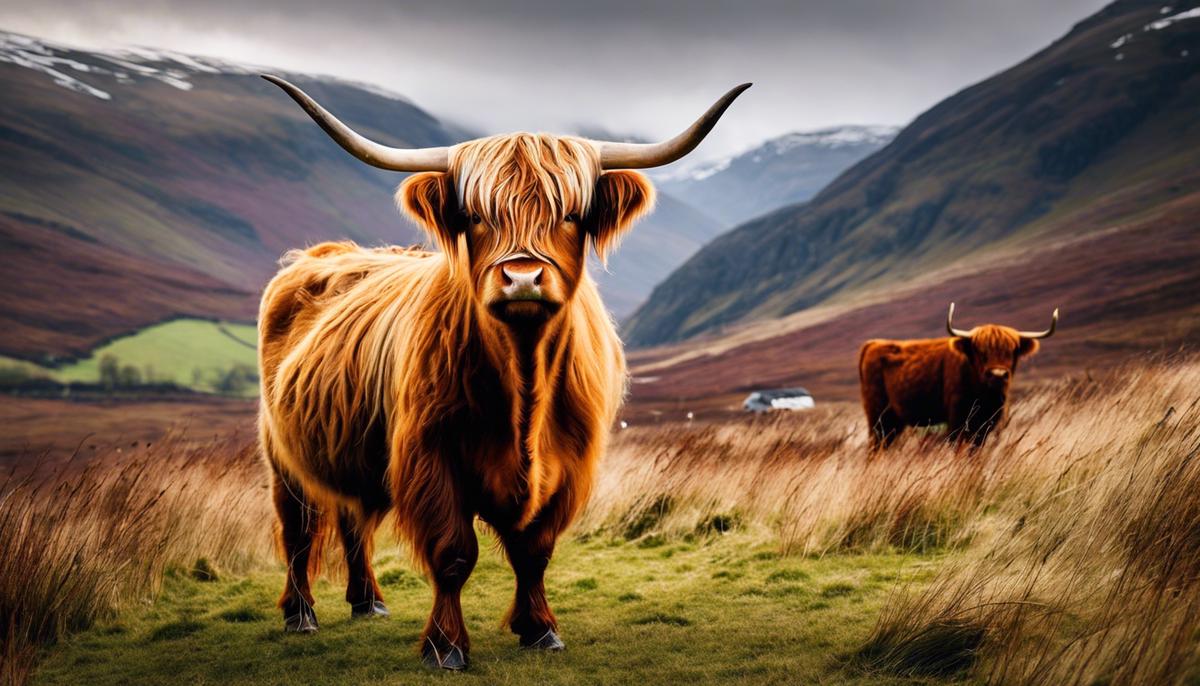
Physical and Behavioral Characteristics | highland cattle
Highland cattle
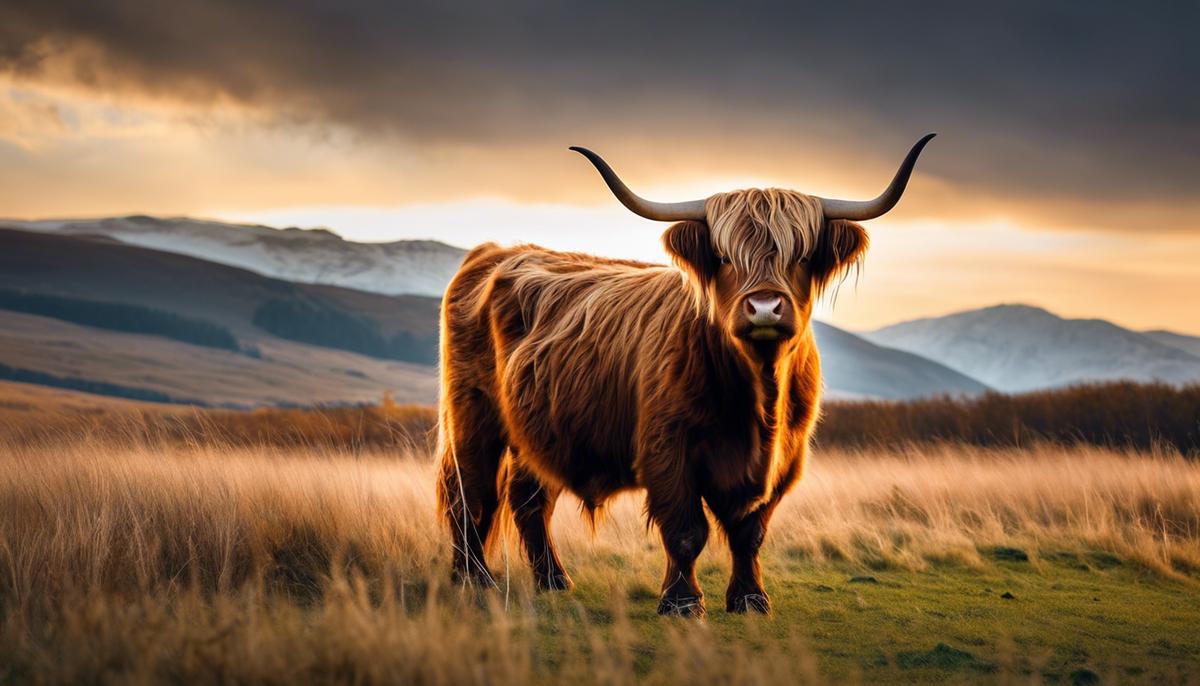
Conservation and Genetic Diversity | highland cattle

Highland Cattle in Agriculture and Society
The Pivotal Integration of Highland Cattle into Contemporary Sustainable Agriculture

What is the purpose of a highland cow?
Highland cows, known for their distinct long hair and large sweeping horns, provide more than just a charming sight; they serve crucial roles in everything from livestock farming to land conservation. Their attributes make them remarkably adaptive and robust, equipped to survive and even thrive in the harshest climates. Through an in-depth exploration of the nature, significance, and impact of these unique creatures, it becomes apparent that Highland cows contribute profoundly to several aspects of human life and the environment in ways that may not be immediately evident.
Hobbyists and enthusiasts alike, you've seen the breathtaking images and perhaps even had the joy of meeting one face to face. There's no denying the allure and charm of the enigmatic Highland Cow, an animal that isn't just unique to look at, but also possesses a variety of endearing attributes that set it apart from the rest.
Highland Cows, or 'Heilan Coos' as they are affectionately known in Scotland, are quite possibly the world's most distinguished cows, with their dramatic, sweeping horns and their shaggy coats often concealing their expressive eyes. They are native to the rugged Highlands of Scotland and have been gracing its glens and mountains for centuries, undeniably a symbol of this wild, untamed region.
These hearty bovines sport a double-layered coat, consisting of an oily overcoat and a downy undercoat. This combo is nature's gift to them, allowing the Highland Cow to comfortably exist in the harshest weather conditions. Whether it's heavy rain, extreme cold, or blistering winds, these cows take it in stride, their unique coat providing them the perfect shield.
Their distinctive, long horns aren't simply there for an aesthetic purpose. They serve a very practical one: to forage and dig through thick snow for food during winter months. Horns vary from cow to cow, contributing to their individuality and uniqueness. Some have wide, outward sweeping horns while others have tighter, upward growing ones.
They're hardy grazers, capable of surviving on poor quality forage, unlike many other breeds that need rich pastures to thrive. Resilient, adaptable and incredibly hardy, they adjust and flourish even in areas where most other livestock would find challenging.
Another attribute that sets the Highland Cow apart is their longevity and fertility. Females, known as 'cows', can breed well into their late teens and often live up to 20 years or more. Male highland cattle, known as 'bulls', are equally impressive in their longevity. It's this longevity that makes them such a financially viable breed for farmers, reducing the need for frequent herd replacements.
Highland cattle are also known for their calm and friendly temperament. Unlike some other breeds, they're known to be very docile, making them a pleasure to handle and the ideal choice for smallholders and beginners in the world of cattle raising.
Studying the Highland Cow's characteristics and capabilities, it's easy to appreciate the effectiveness of nature's design where every detail, from the shaggy coat to the large horns, serves a practical function. Whether you're an experienced farmer or just an enthusiast, there's no denying the distinctiveness of the Highland Cow or their place in the rich tapestry of Scotland's wildlife.

Highland Cows continue to make significant strides in the livestock industry, going beyond their intriguing appearance and adaptable nature. Requiring minimal maintenance, another reason for their prominence lies in their low maintenance requirements. Unlike some other breeds, Highland Cows rarely require any form of vet intervention. They are impressively hardy, enduring ailments with much ease due to their robust immune system. This usually translates to low veterinary bills, making the breed an appealing choice for anyone keen on entering the livestock realm.
Another attribute that elevates the status of Highland Cows in the livestock industry is their impressive meat quality. Highland Cows produce lean meat with considerably less fat and cholesterol, providing a healthier choice for meat consumers. Their meat boasts low marbling, meaning the fat is evenly dispersed throughout the muscles, resulting in meat that is tender and flavorful. Add to this the fact that their meat is rich in protein and iron, and you have a breed that stands out for its beneficial nutritional profile.
Evidently, Highland Cows also boast better environmental adaptability than many breeds. For one, their thick, double-layered coats allow them to endure harsh conditions, which has already been discussed. Aside from their weather adaptability, they also have excellent foraging abilities, helping them to thrive in various environments - from the scottish highlands to the rolling hills of New England. Their ability to graze on plants that other breeds might ignore goes a long way to ensure their survival, as well as the sustainability of the land they occupy. This significantly reduces the demands on the resources of the farmer, contributing to the breed's growing popularity.
On the transportation front, the transport of Highland Cows is less of a hassle compared to other breeds. They are generally more docile and handle transportation stress well. They also seem to acclimate quickly to new environments, a boon for farmers who frequently transact in buying and selling livestock.
Finally, we cannot talk about Highland Cows without highlighting their entrepreneurial potential in agritourism. Their distinctive looks are a magnet for tourists and animal lovers alike, drawing huge crowds interested in animal encounters, farm visits and photo opportunities. This makes the Highland Cows a delightful addition to any farmstead aspiring to join the agritourism industry.
Clearly, it's not just about the impressive horns or the thick furry coats. The Highland Cow has proved itself in many ways, thriving amid challenges and offering multiple practical benefits that make it a favorite among livestock enthusiasts. Their lofty place in the industry is well deserved, and their future looks just as promising.
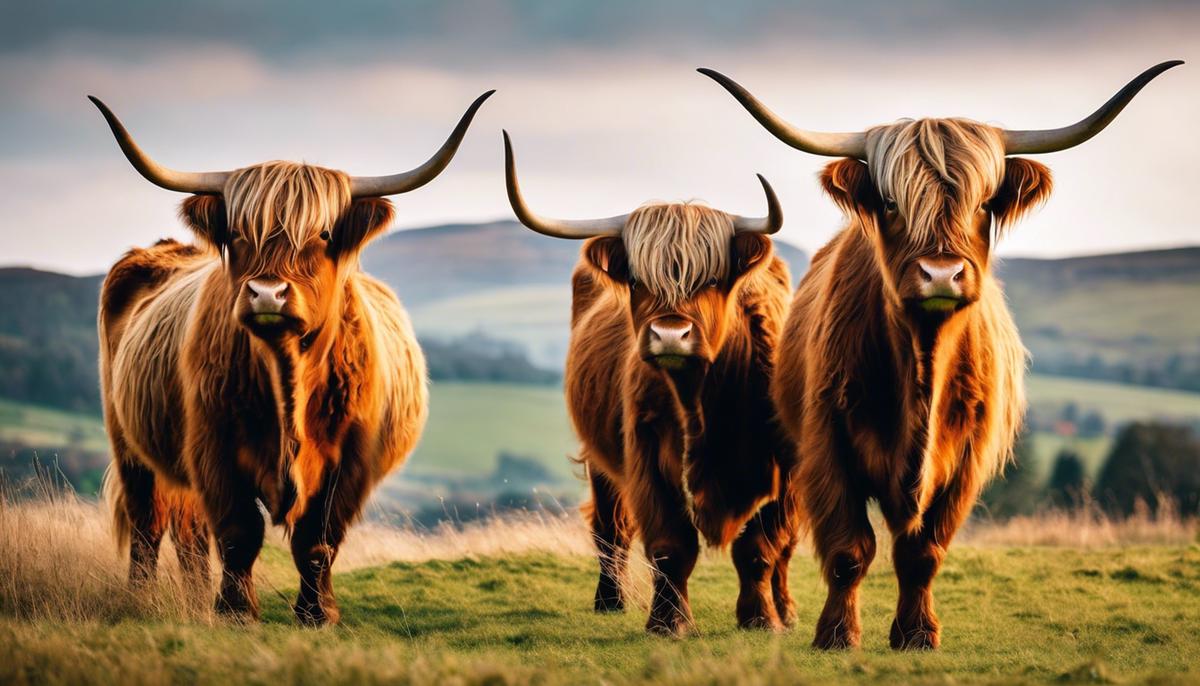
Traditionally, livestock has been seen as contributing to environmental degradation rather than preservation. However, Highland Cows are game-changers. Their ability to thrive on low-quality forage actually benefits the environment, because they're able to convert materials humans cannot eat into nutrient-rich fertilizer. By doing so, they help enrich the soil, promoting the growth of vegetation and ensuring healthy ecosystems.
Moreover, Highland Cows are incredibly hardy animals with sturdily built immune systems. This means they need less veterinary intervention than other breeds, which, in turn, significantly decreases the need for pharmaceuticals. These medications often make their way into our groundwater and can harm the environment. With Highland Cows needing fewer medications, the environmental impact is mitigated.
Another noteworthy point relates to their meat. Highland Cows are celebrated for lean meat that's lower in fat and cholesterol than commercial breeds. Since high-intensity meat production often damages the environment through overgrazing and high carbon emissions, moving towards more sustainable options like free-range cattle farming can make a big difference.
And then, there’s the adaptability of Highland Cows. They're perfectly capable of acclimatizing to varying conditions, whether we talk about an idyllic Scottish Highland pasture or a rugged North American hillside. They're just as content on marginal land as they are on rich pastures. This means that good quality land can be saved for growing crops, while the less fertile areas can be designated for grazing Highland Cows.
Finally, it's worth considering the potential of Highland Cows in agritourism. They're an iconic symbol of Scotland, recognized by their trademark long horns and shaggy coats. As such, they can play a significant role in attracting eco-tourists and enticing visitors to small farms and rural areas. Plus, it's a great opportunity to educate visitors about sustainable farming, biodiversity, and the crucial role that Highland Cows – and similar adaptive breeds – play in promoting environmental conservation.
All considered, it’s evident that Highland Cows aren't just visually impressive but also play a vital role in maintaining sustainable farming practices and promoting biodiversity – a testament to their value beyond aesthetics or entertainment. As we strive towards a more sustainable and conservation-focused mindset, the Highland Cow presents a perfect model for achieving this balance.

In the rich tapestry of popular culture, Highland Cows have held a distinctive place attributable to their distinctive visual appeal and endearing personality. It's quite amazing how these charismatic creatures, originally known for their endurance in chilly, highland climates, have garnered a flurry of attention, boosting their popularity across the globe.
With their rustic amber coat that's anything but ordinary, and long, curved horns, Highland Cows are photogenic bovine wonders. When a Highland Cow's image graces postcards, travelogues, TV ads, or animated films, it instantly captivates and lures the audience. The massive influence of media and popular culture has fueled the love for these Scottish classics, often symbolizing a pastoral idyll that many find enchanting. This visibility also stirred a fascination for their unique physical traits, paving the way for their unprecedented popularity.
Talking about popular culture and Highland Cows, one cannot ignore the impact of social media. Numerous Instagram and Facebook accounts dedicated specifically to Highland Cows frequently share snapshots of these 'teddy bear-like' animals. These cuddly and fuzzy images often go viral, reaching millions of users worldwide thus catapulting these shaggy bovines to social media stardom. This wide-reaching portrayal and visibility have significantly augmented their fanbase.
Moreover, Highland Cows have often been depicted as non-threatening, amiable characters in children's literature and cartoons, thus shaping the perceptions of the younger generation. These portrayals highlight their amicable nature, unlike the stereotypical image of boisterous bulls, consequently nurturing a positive attitude towards this breed. Making them, in essence, cool characters that kids can't help but adore.
However, it's not simply about aesthetics or the 'cuteness factor'. The Highland Cows' portrayal in a milieu of sustainable and organic farming has further stoked their popularity. Their ability to thrive in varied climates, resist diseases, and produce quality meat has been highlighted in many documentaries and farming journals. Such exposure has led to a growing attraction and demand for this breed among farmers and ranchers keen on sustainable practices, which has undeniably increased their popularity.
Finally, the Scottish heritage and cultural prestige that come associated with Highland Cows play an integral role in their popularity. Seen in festive celebrations, folktales, logos, and as symbols of national pride, they've become intertwined with Scottish identity, and hence, gained global appeal.
In summary, through their magnificent depiction in popular culture, from delightfully fuzzy social media stars to sturdy icons of sustainable farming, Highland Cows have truly become popular characters in their own right. Their versatility and charismatic appeal captivate audiences far and wide, ensuring their place in the limelight, now and in the future.
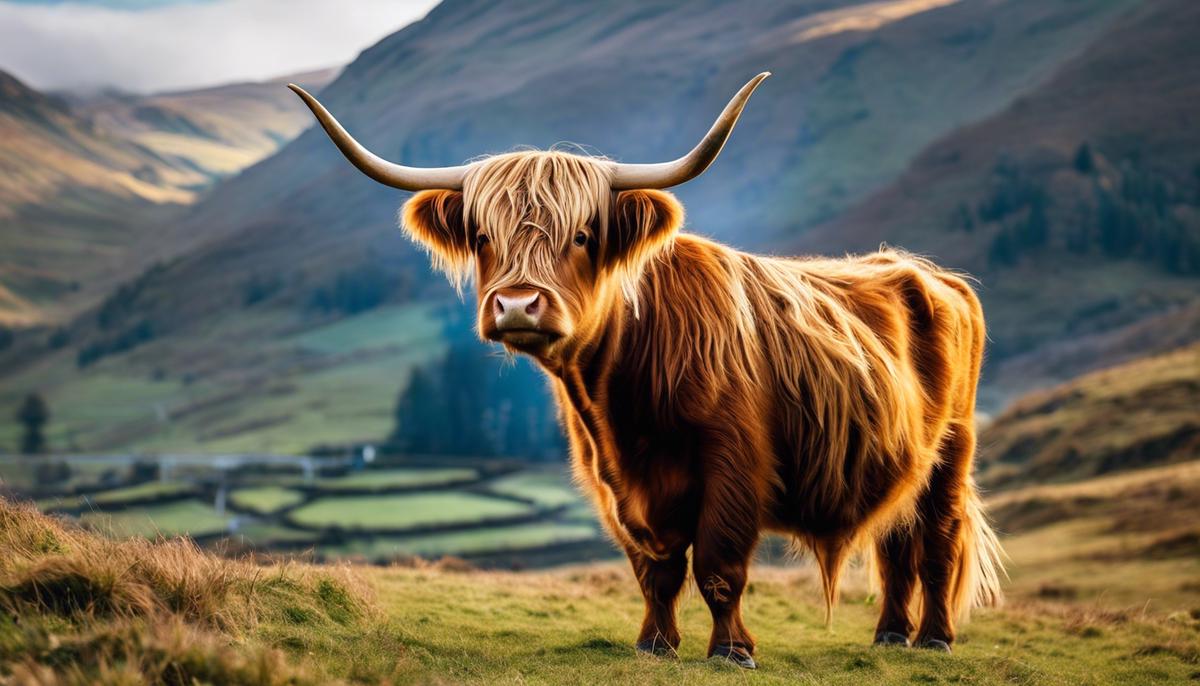
Ending our journey with the worldly, charming, and versatile Highland cow, it is clear that these creatures' importance extends far beyond their picturesque appearance. They not only increase agricultural efficiency and enhance biodiversity but also play a valuable part in conservation grazing and the preservation of landscapes. Their presence in popular culture has not just increased the admiration and respect for this breed but has also helped elevate their symbolic significance across various platforms. The Highland cow is more than a livestock staple; it serves as a testament to our close-knit relationship with nature and the ways we can cultivate this bond to enrich both our world and theirs.